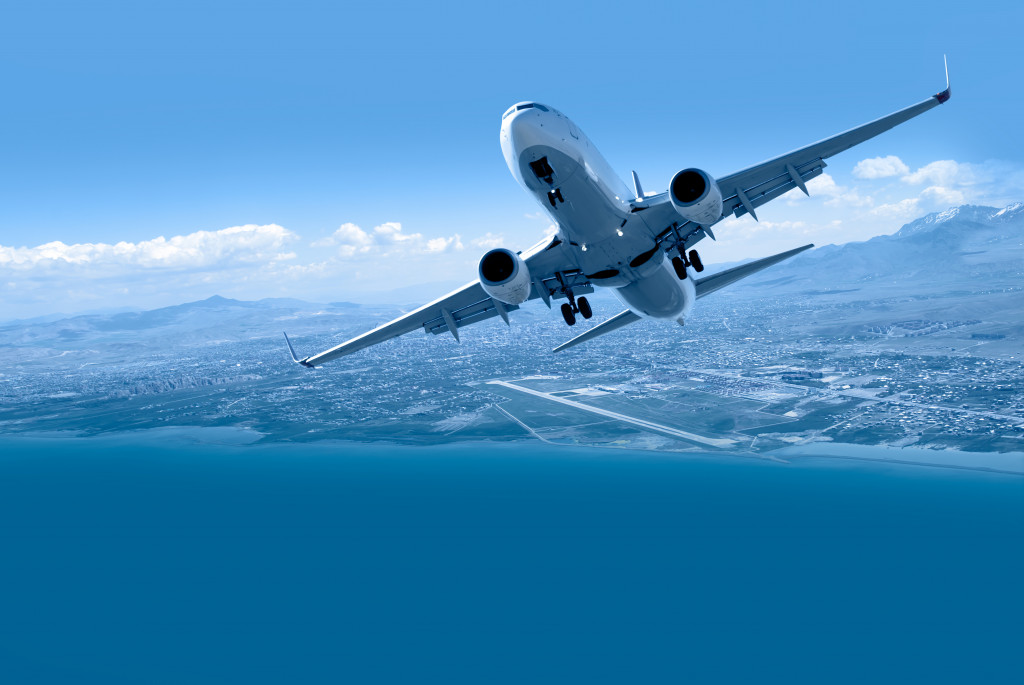The aviation industry is constantly changing and evolving. In order to keep up with the latest advancements, pilots and aircraft maintenance workers need to be aware of the latest improvements in the industry. So, here are six recent innovations in aviation that have made flying more efficient.
1. ADS-B Technology
ADS-B (Automatic Dependent Surveillance-Broadcast) is a technology that allows aircraft to automatically transmit their position, altitude, speed, and other data to ground stations and other aircraft equipped with ADS-B receivers.
This technology improves efficiency by reducing or eliminating the need for traditional forms of air traffic control, such as ground-based radar stations. For example, ADS-B can be used to provide pilots with real-time information about the location and speed of other aircraft in the vicinity, allowing them to avoid potential conflicts.
In addition, ADS-B can also be used to provide air traffic controllers with more accurate data about the location and movements of aircraft, which can help them manage traffic flow more effectively.
2. NextGen Air Traffic Control System
The Next Generation Air Traffic Control System (NextGen) is a significant upgrade to the existing air traffic control system in the United States. NextGen will eventually replace ground-based radar with a satellite-based system that will allow aircraft to be tracked more accurately and provide pilots with real-time data about weather, traffic, and other conditions.
This will improve efficiency by reducing delays and increasing capacity at airports. For instance, NextGen will allow more aircraft to land and take off during bad weather because pilots will have better information about conditions on the ground.
In addition, NextGen will also improve safety by reducing the potential for mid-air collisions. This is because the new system will provide pilots with more accurate information about the location and movements of other aircraft in the vicinity.
3. Ground Support Equipment
Ground support equipment (GSE) is the machinery and vehicles used to service aircraft on the ground. This includes everything from air conditioners and generators to fuel trucks and baggage carts.
Therefore, reliable GSE services are essential for any airport, as they help ensure that aircraft are correctly serviced and maintained. This, in turn, helps to improve efficiency by reducing delays and ensuring that aircraft are safe to fly.
In addition, GSE can also help to improve safety by providing a means for quickly addressing any problems that may arise with an aircraft on the ground. For example, if an engine problem is detected, a GSE-equipped mechanic can quickly assess the situation and take the necessary steps to resolve the issue.

4. Electric Aircraft
Electric aircraft are powered by batteries or fuel cells instead of traditional internal combustion engines. Electric aircraft are more efficient than traditional aircraft because they have lower operating costs and produce no emissions. Electric aircraft are still in development, but they hold promise for the future of the aviation industry.
For example, the Airbus E-Fan is a two-seater electric aircraft that made its maiden flight in 2014 and has reached speeds of up to 220 km/h (137 mph). In the future, electric aircraft are expected to become more common as battery technology improves and charging infrastructure is developed.
Moreover, electric aircraft are also expected to be quieter than traditional aircraft, improving passengers’ flying experience and reducing noise pollution around airports.
5. Usage-based Navigation
Usage-based navigation is a new way of routing aircraft that takes into account factors such as weather, airspace restrictions, and airport capacity. This helps to improve efficiency by ensuring that aircraft are routed in the most efficient way possible.
In addition, usage-based navigation can also help to improve safety by reducing potential delays and cancellations. This is because the system takes into account factors that can cause delays, such as bad weather or air traffic congestion.
For example, the European Organisation for the Safety of Air Navigation (EUROCONTROL) has developed a usage-based navigation system that will soon be used by air traffic controllers across Europe.
6. Advanced Avionics Systems
Advanced avionics systems are becoming more common on new aircraft. These systems improve safety and efficiency by providing pilots with better information about weather, traffic, and other factors that can impact their flights.
For example, some aircraft are equipped with advanced avionics systems, including a head-up display (HUD). This display provides pilots with information about the aircraft’s speed, altitude, and heading. In addition, the HUD also shows other important information, such as the location of other aircraft in the vicinity. This helps to improve safety by reducing the potential for mid-air collisions.
Advanced avionics systems are also becoming more common on business jets and regional aircraft. For example, some are equipped with an advanced avionics system that includes a HUD and enhanced vision system (EVS). The EVS allows pilots to see in low-visibility conditions, such as fog or clouds.
The aviation industry is always changing and evolving. Here are six recent improvements that are just a few of the many that have made flying more efficient in recent years. As new technologies and concepts are developed, the aviation industry will continue to become more efficient, making flying safer and more convenient for everyone involved.




